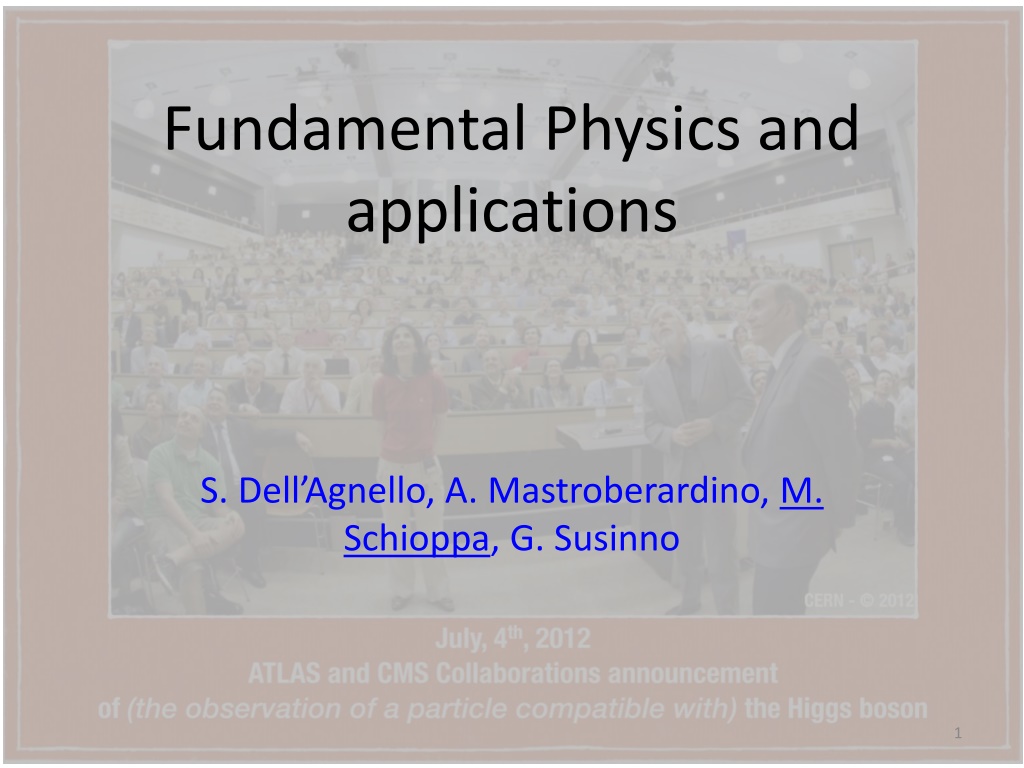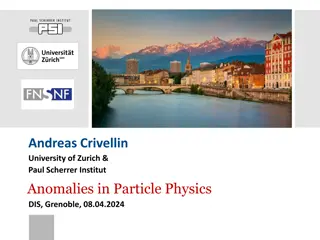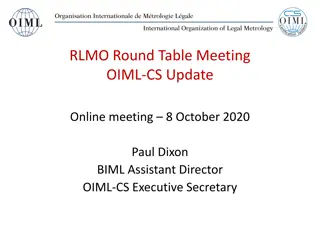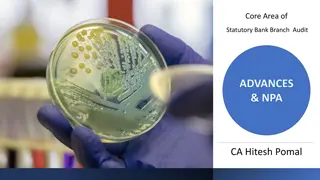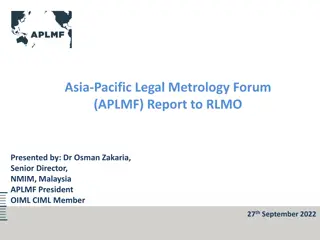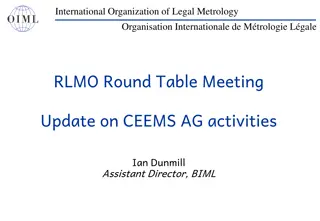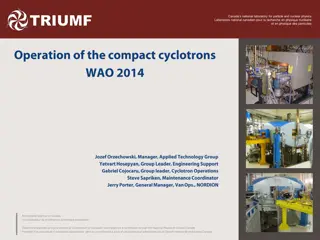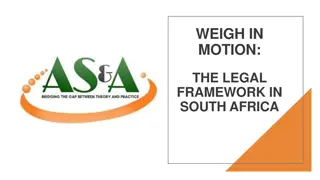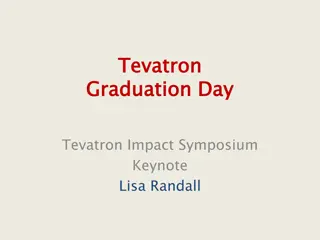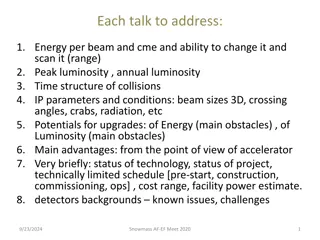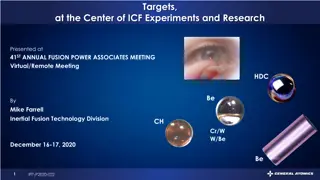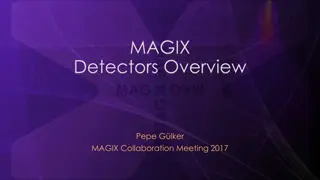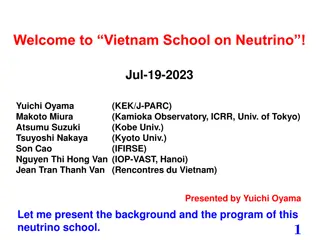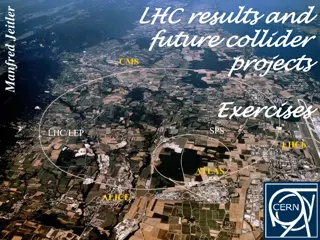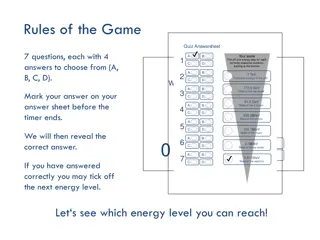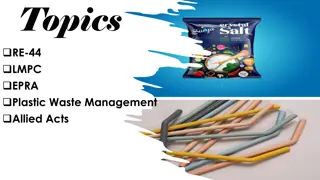Advances in Experimental Particle Physics and Metrology Technologies
This collection of images and text highlights the essential aspects of fundamental physics experiments, particle physics detectors, and the Atlas ITk project. It also focuses on the importance of metrology for physics and satellite experiments, with a specific emphasis on laser technologies. The content covers topics such as the significance of detectors in particle physics, the challenges faced in upgrading the Atlas ITk project, and the role of metrology in positioning for scientific experiments. Key themes include the need for high-resolution detectors, advancements in experimental physics, and the participation of various research institutes in these endeavors.
Uploaded on Sep 19, 2024 | 0 Views
Download Presentation

Please find below an Image/Link to download the presentation.
The content on the website is provided AS IS for your information and personal use only. It may not be sold, licensed, or shared on other websites without obtaining consent from the author. Download presentation by click this link. If you encounter any issues during the download, it is possible that the publisher has removed the file from their server.
E N D
Presentation Transcript
Fundamental Physics and applications S. Dell Agnello, A. Mastroberardino, M. Schioppa, G. Susinno 1
Fundamental Physics Experiments The smaller the object to investigate the larger the apparatus to use: accelerators + detectors Crystallography Sub-Nuclear Physics source beam target beam targetdetector detector n = 2dsin 2
Particle Physics Experiments To take this kind of picture we need particle detectors with the following characteristics Radiation hard High spatial resolution Sensitivity to charge and neutral particles High time resolution Low cost 3
Detectors Position (resolution better than 100um) Energy Momentum Time of flight (resolution better than 1ns) Trigger Selection of the interesting events Tracking Pattern recognition and reconstruction of the particle track 4
12 5
The Atlas ITk project: upgrade of the entire tracker Inner detector (ID) has limited lifetime: aged mostly by high total radiation dose (fluence) Very severe pile-up conditions expected: from 140 to 200 PV Need finer segmentation to ensure pattern recognition Complete construction of a new ID to be tested on surface in 2021 and installed during LS3 More than 80 participating Institutes Cosenza contribution: simulation, mechanics Now 2022 140-200 collisions every 25ns bunch crossing 7
Metrologia del posizionamento per esperimenti di fisica e satelliti, con enfasi su tecnologie laser Simone Dell Agnello Coordinator of Technological and Interdisciplinary Research Commissione Scientifica Nazionale 5 (CSN5) INFN- LNF/Cosenza Italian National Institute for Nuclear Physics, Laboratori Nazionali di Frascati (INFN-LNF) Via Enrico Fermi 40, Frascati (Rome), 00044, Italy 8
SLR/LLR examples LAGEOS (h ~ 6000 km): ToF ~ 0.05 sec S L R Apollo LRA Lunar Laser Ranging: ToF ~ 2.5 sec 9
APOLLO 11, 14, 15 Apollo 11: 100 CCRs Flight payload for GPS-2 @INFN-LNF: LAGEOS I ( 76; NASA), LAGEOS II ( 92; NASA/ASI) 32 CCRs (property of Univ. Maryland) COPERNICUS RETROREFLECTO R ARRAY (for Earth Observation) 10 ?
Lunar Laser Ranging: accurate at ~ 10-11 of Earth-Moon distance Relative sizes and separation of the Earth Moon. An LLR pulse takes 1.255 sec for the mean orbital distance. Locations of 1st Gen. Lunar Retroreflector Arrays 11
